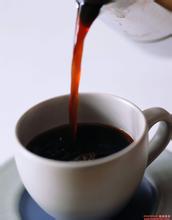Red wine acidity, Sugar cane juice, Kenyan Jinchugu coffee flavor, characteristics, taste and manor introduction
Asia from the Gichugu production area of Enbu processing plant (Embu Washing Station), using Kenyan-style double washing treatment, growing in 1550-1750 Kenya mountains in the eastern slopes of Manyata-Enbu County, the variety is Kenya's classic SL28,SL34, coupled with the deceived day and night temperature difference, and Kenya's red phosphate soil, make sweet and sour into this Kenyan secondary flavor tone. Jinchugu was founded in 1970. Together with Kamviu, Gakundu and Ka Kui washing Plant, they formed the Gakundu Farmers' Cooperative. There are 980 coffee farmers in Jinchu Valley and 3600 small farmers are registered in the whole cooperative. In Enbu county, nearly 85% of coffee cultivation comes from small farmers. They picked the ripe coffee fruit and sent it to the washing station for centralized treatment. the coffee fruit was peeled in the Enbu processing plant, fermented overnight, washed and dried naturally in an elevated shed.
Product name: AA TOP of Jinchu Valley, Kenya
English: Kenya Gichugu Embu AA TOP
Producing area: Jinchu Valley (Gichugu Division,Kirinyaga East District)
Consumer: Enbu processing Plant (Embu Washing Station)
Treatment method: Kenyan double washing treatment
Altitude: over 1550-1750 m
Variety: SL28,SL34
Baking degree: medium and shallow baking
Flavor: Cherry, black plum, honey, BlackBerry, Sugar cane juice, sour red wine

Important Notice :
前街咖啡 FrontStreet Coffee has moved to new addredd:
FrontStreet Coffee Address: 315,Donghua East Road,GuangZhou
Tel:020 38364473
- Prev

Antigua Coffee
A cup of Antigua coffee in Guatemala seems to let us see the mysterious Mayans who suddenly disappeared in ancient land, history brushed away their existence, history made them forever. If a person's wrinkles describe the path a person has traveled, then the aroma of coffee remembers the origin of a cup of coffee: about its native terroir, harvest year, roasting and grinding.
- Next

Costa Rican coffee flavor Costa Rican coffee producing area
Coffee is an important economic source of Costa Rica. It was introduced in 1808 and has been cultivated for 200 years. Costa Rica has 1x3 population invested in coffee-related industries. Colombians say that coffee has changed the country and enjoyed a rich environment, and coffee has indeed made an outstanding contribution. Although Costa Rica ranks third from the bottom in terms of land area in Central America, the economic environment is better than half.
Related
- Detailed explanation of Jadeite planting Land in Panamanian Jadeite Manor introduction to the grading system of Jadeite competitive bidding, Red bid, Green bid and Rose Summer
- Story of Coffee planting in Brenka region of Costa Rica Stonehenge Manor anaerobic heavy honey treatment of flavor mouth
- What's on the barrel of Blue Mountain Coffee beans?
- Can American coffee also pull flowers? How to use hot American style to pull out a good-looking pattern?
- Can you make a cold extract with coffee beans? What is the right proportion for cold-extracted coffee formula?
- Indonesian PWN Gold Mandrine Coffee Origin Features Flavor How to Chong? Mandolin coffee is American.
- A brief introduction to the flavor characteristics of Brazilian yellow bourbon coffee beans
- What is the effect of different water quality on the flavor of cold-extracted coffee? What kind of water is best for brewing coffee?
- Why do you think of Rose Summer whenever you mention Panamanian coffee?
- Introduction to the characteristics of authentic blue mountain coffee bean producing areas? What is the CIB Coffee Authority in Jamaica?

